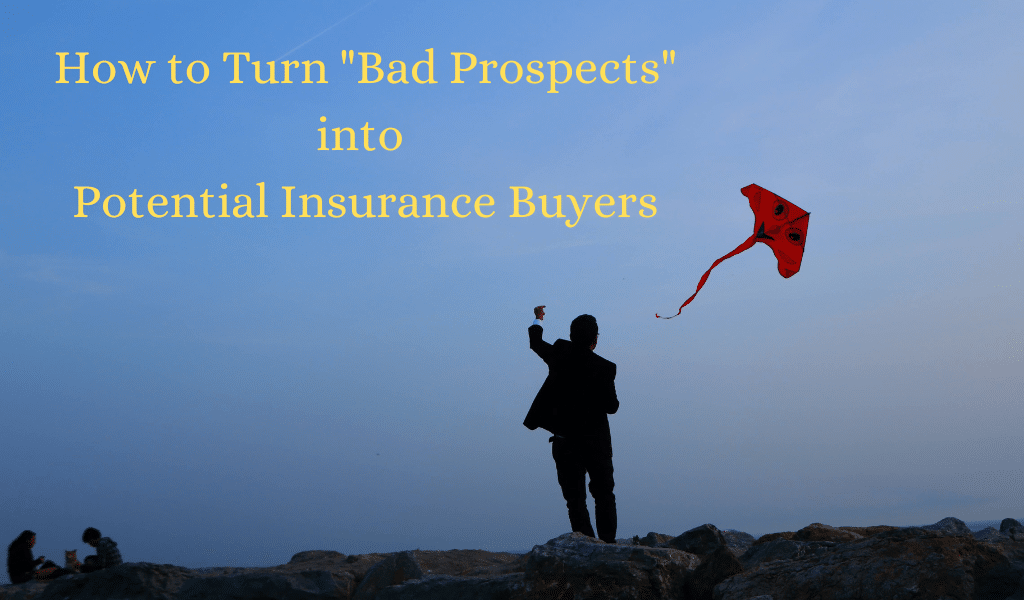You have a slush pile of potentially bad prospects for your insurance products. Here’s how you can turn them into buyers.
There’s a concept in sales that essentially suggests that you let your bad prospects go and concentrate on the prospects most likely to buy your product. There’s a lot to be said for that. By several measures, most of your revenue comes from a small number of customers.
While that makes a lot of sense in terms of efficiency and a potentially higher return on your investment, it also leaves you open to a potential crisis if several of your biggest customers leave or if your prospects go with another company. Placing your energy and efforts on more prospects, both the good and bad prospects, evens out your risk.
To be clear, I’m not advocating a significant change in your strategy here. It’s still generally beneficial to try to close deals with your best prospects first. That doesn’t mean you need to ignore everyone else entirely. In fact, it’s well worth putting at least some effort into those prospects who may seem less likely to become customers. Here’s why and how to do it.
Call Logic’s auto-dialer and call management software offers dozens of helpful tools to increase your success and simplify your daily tasks. Call for your free consultation today to learn more!
Who are your “bad prospects?”
What, exactly, are these so-called bad prospects? By most definitions, these are the prospects who either don’t have an interest in your product or don’t have the means to buy your product.
On the other hand, good prospects are those who are interested in your product, have the means to buy your product, and are ready or close to ready to make a purchase.
Again, if we’re looking at the most efficient way to close deals, your good prospects deserve most of your attention. They’re much more of a sure thing. If you have someone ready to buy, that’s what you want to focus on.
That said, many of your bad prospects have the potential to turn into insurance buyers. It’s your job to determine how to nurture them and pique their interest without devoting significant resources to the process.
Who are these leads? Here are a few examples:
- A long-term employee of a business that may be shopping for business insurance. Though the employee may not be the decision-maker, they could have influence.
- Someone who doesn’t currently have the budget for your insurance product, but may in the future.
- Prospects who have a current contract with a competitor that you know has poor customer service reviews.
- Price is the driving factor in their decision-making process (rather than value).
Of course, there are other potentially “bad” prospects, and some truly are bad. That said, it’s worth digging to find out where these prospects fall.
Nurturing future insurance buyers
Now comes the fun part! You’ve sorted through your prospects. Your warm leads and hot leads take priority, of course. However, you still have all these other leads who aren’t necessarily your most-qualified leads, but you aren’t ready to write them off.
You have several options for nurturing these prospects without taking a significant amount of time, money, or energy. Here are some ideas:
1. Keep them on your email list. When it comes to business expenses, most email service providers are relatively affordable. As far as your time goes, if you’re already writing an email, there’s no extra effort to send it to your entire email list.
2. Always provide value. Whether it’s an email, a phone call, or a blog post, always provide something of value to your audience, including your bad prospects. There are so many potential tips and advice you could offer related to insurance. Depending on your specialty, anything from what to look for in business insurance to safe driving tips to safely removing snow from your home’s roof is all within your realm of expertise.
3. Promote your value proposition. Every business has a value proposition. This is the core of what your business does better than anyone else. If you have quick claim turnaround times, that could be your value proposition. Or it may be that you’ve been voted “best customer service” for five years straight. Whatever it is, be sure to highlight yours on your website, your promotional material, and anywhere else you can.
4. Play the long game. Even some of your best prospects may take time to convert, so don’t get impatient when your bad prospects are slow to convert. There’s a possibility they may never become customers. Again, though, if you can continue to nurture them without spending a lot of time or money, you may find it’s worth the effort over time.
5. Give them a call. They’re on your email list, they’ve come to your open house (even if it was just for the free pizza), and now it’s time to give them a call. Do NOT spend a lot of time on this. However, it won’t hurt anything to dedicate a morning every few months to call your list. Check in, see how they’re doing, and ask if they want to discuss insurance with you. If they do, great! If not, ask if it’s okay to keep them on your list and call now and then. They may say no, at which point you can remove them from your list. Either way, this isn’t a huge investment of time, and it could lead to new customers.
Make more calls, manage your customers in a cloud database, track your call statistics, and much more with Call Logic. Schedule a free demo today to see what you’ve been missing!

